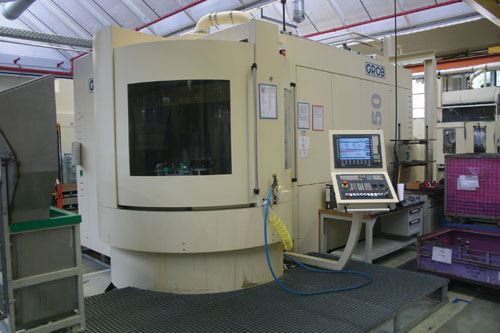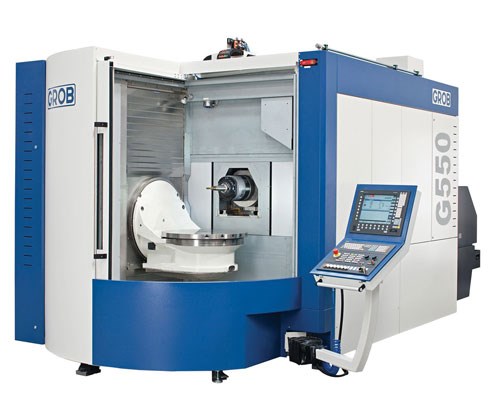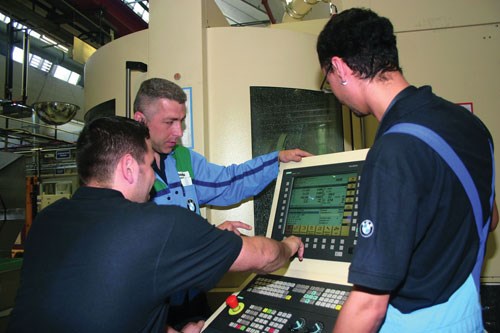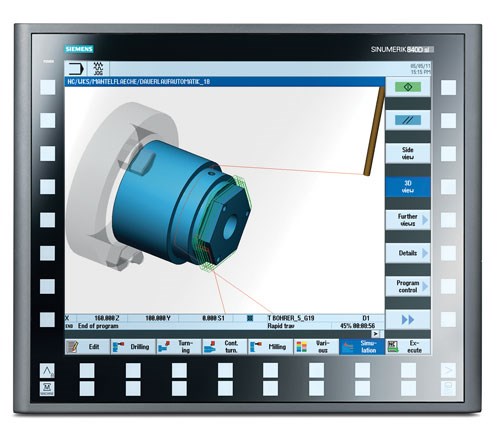Investing in new equipment is always a balancing act for BMW’s motorcycle manufacturing plant in Berlin. Ensuring the highest possible product quality is a top priority. However, the company must also consider whether the investment’s potential for enabling more cost-effective manufacturing than external contractors justifies its initial cost. According to the company, a group of G550 five-axis HMCs from Grob has proven successful on both counts—so much so that the plant recently ordered four more identical models.
The HMCs, which joined approximately 50 other machine tools on the plant floor, are dedicated solely to the production of cylinder heads for flat and four-cylinder engines. Key factors contributing to their selection included adequate space to produce all relevant components, high precision, quality surface finish, compliance with pre-defined cycle times, and the ability to reuse current tools and equipment. Additionally, a new interface for the machines’ Siemens CNCs has decreased setup time for new batches of parts.
Initially, however, the company was drawn to a different machine: Grob›s G350. Although this machine met nearly all the major requirements, it proved too small to accommodate all the required work. As a nearly identical model, the G550 provides all the benefits of the G350 along with adequate space to machine even the largest cylinder-head components. The company adds that despite Z-axis stroke of 1,020 mm, the machine’s footprint is still compact at 3,800 by 6,300 mm. A so-called “spindle tunnel” enables tools as long as 500 mm to retract completely out of the work area.
Rigidity is important for applications that require high precision and axial deviation values of less than 10 microns, often in very hard materials, and the G550 delivers, the company says. It also produces surface finishes with roughness ranging to only 2 µm Rz. According to Grob, the machine’s rigidity is partially a result of its horizontal configuration, in which the table provides both rotary axes of motion. The machine tool builder adds that configuration also improves chip evacuation, and by extension, tool life. “The problem of jammed slivers is almost completely eliminated because they fall right through to the ground,” says Christian Heiss, applications engineer at Grob.
Among other notable machine features, the company cites swivel-mounted shuttle tables that reduce downtime by enabling operators to set up one workpiece while another undergoes machining. However, not all the machines’ advantages result from mechanical attributes. The fact that the G550s use Siemens CNCs was a major factor in their selection. In part, that’s because 90 percent of the Berlin plant’s machines use controls from the same supplier, the company says. This provides operators and tool setters with the flexibility to work with almost any machine.
Nonetheless, the user interface on the Grob machines’ Sinumerik 840D CNCs looks com-pletely different from the others. Prior to installing these models, Siemens’ DIN-based HMI Advanced user interface was the norm at the BMW plant. However, the Grob ma-chines’ CNCs feature the new Sinumerik Operate animated graphical display.
The new interface provides options for workpiece programming and setup, including ShopMill, Program-Guide and pure DIN/ISO programming. ShopMill provides an animated, graphical work-step programming environment for simple dialog programming. The interface is de-signed to be clear and self-explanatory so that even operators without programming experience can learn the basics quickly. Writing programs in ProgramGuide requires some knowledge of G code. Highlights include new cycle support functionality, tooltip support, and the use of animated elements to represent the cycle graphically.
Despite the control’s new operation and programming structure, BMW reports that the interface is intuitive enough that employees are able to adapt and master it quickly. For example, it employs practical functions like copy and paste that are well-known to employees who use PCs on a daily basis. In all, the intuitive nature of Sinumerik Operate’s various technology cycles, measurement cycles and setting functionality has enabled faster setups of new batches of parts, the company says.
Another key factor in selecting the Grob G550s was the fact that they are compatible with the plant’s existing tools and equipment. The company has been able to re-use its existing part programs as well. In fact, it took a single employee only two days to upgrade these programs to be compatible with the latest software, which can be loaded onto any of the machines from the network or a USB stick. Also, the Windows Explorer-style program manager enables managing complex programs either on the compact flash (CF) card or directly on the CNC.
Finally, the company says network-based remote maintenance functionality provided by Grob helps quickly and smoothly deal with any problems that arise while a machine is operational, although that’s rare. Also, Grob and Siemens can use the teleservice for performing minor optimizations. This is usually done automatically and without disrupting production.



























.jpg;maxWidth=300;quality=90)












